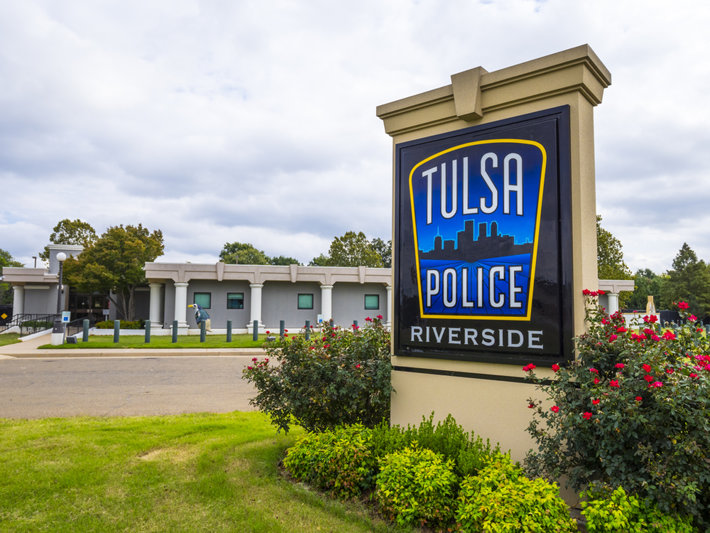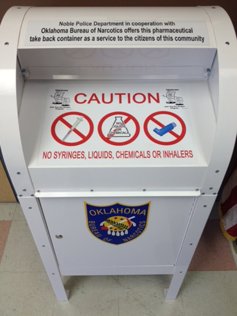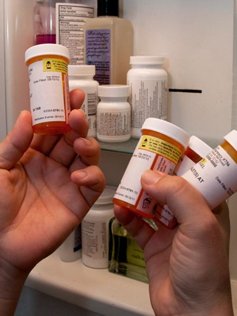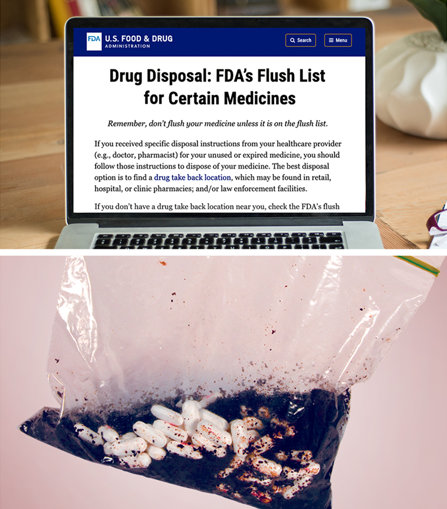Resources for Disposing of Unused Pharmaceutical Drugs in Oklahoma

Many pharmaceutical drugs are addictive and pose a serious risk when not used exactly as prescribed. That is why potentially addictive pharmaceuticals should always be carefully stored (and disposed of when they’re no longer needed).
People across the age spectrum are at risk if they self-medicate or experiment with pharmaceuticals, but young people are arguably at the highest risk. Thankfully, there are options for parents who want to safely and ethically dispose of medications they do not need.
Permanent Collection Sites: Prescription Drug Take Back Programs in Oklahoma

The Oklahoma Bureau of Narcotics & Dangerous Drugs Control manages several programs that keep potentially dangerous, mind-altering drugs away from the public. Their website offers search functions that help families find locations in Oklahoma where they can safely dispose of unused medications. That site also provides information on which prescription drugs should not be flushed down the toilet in that state.
If, for any reason, Oklahoma families cannot find a permanent take back location using the Oklahoma Bureau of Narcotics & Dangerous Drugs Control website; there is a federal database that may have more options for families. This database is maintained in a collaborative effort between the Food and Drug Administration and the Drug Enforcement Administration.
Keep an Eye Out for Nationwide Prescription Drug Take Back Programs
The Drug Enforcement Administration hosts a national event twice per year called Prescription Drug Take Back Day. The event is usually held in April and October. It seeks to organize and collaborate the efforts of law enforcement offices, local pharmacies, community health centers, private medical practices, and hospitals to collect and safely dispose of unused prescription drugs.
The next National Prescription Drug Take Back Day is April 22, 2023, from 10 AM to 2 PM.
But Do Prescription Drug Take Programs Work?

But do prescription drug take back programs work? For a clear answer, one only needs to examine the statistical data on how many prescription drugs are removed from homes and safely disposed of, thanks to such programs.
For a look at the hard data on what prescription drug take back programs can do on a national level, the following are the outcomes of the last two years of bi-annual Prescription Drug Take Back Day events hosted by the Drug Enforcement Administration:
October 2022:
- Total Collection Sites: 4,902
- Total Weight Collected: 647,163 lbs. (324 Tons)
- Total Law Enforcement Office Participation: 4,340
- Total Weight All Time: 16,636,729 lbs. (8,318 Tons)
April 2022:
- Total Collection Sites: 5,144
- Total Weight Collected: 721,093 lbs. (360 Tons)
- Total Law Enforcement Office Participation: 4,427
- Total Weight All Time: 15,989,566 lbs. (7,995 Tons)
October 2021:
- Total Collection Sites: 4,982
- Total Law Enforcement Participation: 4,276
- Total Weight Collected: 744,082 lbs. (372 Tons)
April 2021:
- Total Collection Sites: 5,060
- Total Law Enforcement Participation: 4,425
- Total Weight Collected: 839,543 lbs. (420 Tons)
The April and October Prescription Drug Take Back Days can produce impressive figures like those listed above because the DEA organizes law enforcement offices, local pharmacies, medical practices, and hospitals across the country to collect as many unused medications as possible for safe disposal.
What About At-Home Disposal?

To dispose of medications safely, the Food and Drug Administration recommends doing the following:
1). Remove the medications from their original containers.
2). Mix the pills with undesirable byproducts, like coffee grounds or cat litter.
3). Put the mixture into a re-sealable bag, can, or container that will not leak or spill.
4). Place the bag, can, or container in the household trash bin along with other refuse items.
The FDA outlines certain prescription drugs that should not be disposed of this way and should instead be flushed down the toilet. However, any prescription drug disposal using the wastewater system poses some risk of contaminating the environment with prescription drug chemicals. For prescription drugs that should not be disposed of in household trash, families should first attempt to dispose of them at take back events or at permanent take back sites before flushing them.
An Epidemic of Prescription Drug Addiction in Oklahoma
Oklahoma struggles with one of the country’s worst prescription drug addiction epidemics. According to a report published by the Oklahoma Policy Institute, the Sooner State has the fourth-highest rate of drug overdose fatalities in the country when measured per capita. Further, Oklahoma exceeds the national average for misuse and abuse of painkillers by 232%, with drug overdoses being the leading cause of death for Oklahoma residents ages 25 to 64. Most years, prescription painkillers claim more lives in Oklahoma than meth, heroin, and cocaine combined.
The facts could not be more clear. Unused medications left in the home pose no benefit to families but carry a significant risk, not just for those who live in the home but for anyone who visits.
Given the ease with which homeowners can dispose of such medications, people should take the necessary steps to dispose of unused medications in Oklahoma safely, be it via a take back event, a permanent disposal site, or personal disposal of the medications.
Sources:
- OBNDDC. “Rx Take Back Program.” Oklahoma Bureau of Narcotics & Dangerous Drugs Control, 2022. obndd.ok.gov
- FDA. “Drug Disposal: Drug Take Back Locations.” Food and Drug Administration, 2022. fda.gov
- DEA. “National Prescription Drug Take Back Day is April 22, 2023 – 10AM to 2PM.” Drug Enforcement Administration, 2023. dea.gov
- DEA. “Take Back Day.” Drug Enforcement Administration, 2023. dea.gov
- FDA. “Where and How to Dispose of Unused Medicines.” Food and Drug Administration, 2022. fda.gov
- PSI. “Bay mussels in Puget Sound show traces of oxycodone.” Puget Sound Institute, 2018. pugetsoundinstitute.org
- OKPolicy. “Oklahoma’s biggest drug problem isn’t what you think.” Oklahoma Policy Institute, 2019. okpolicy.org


